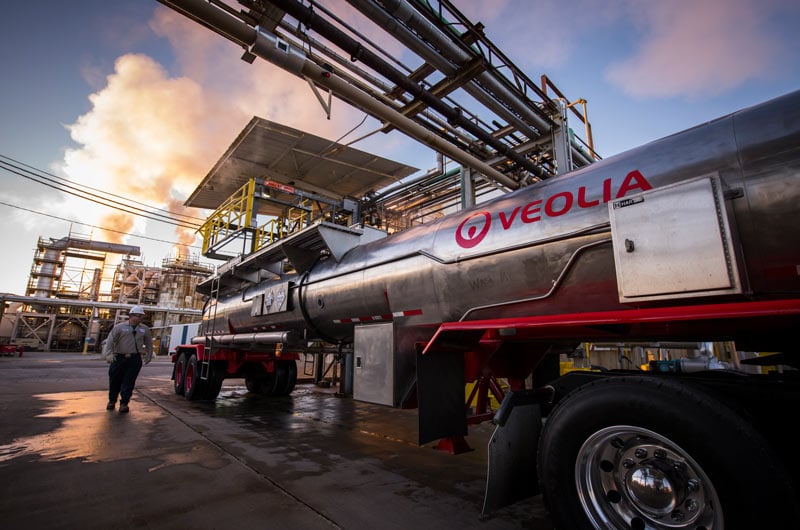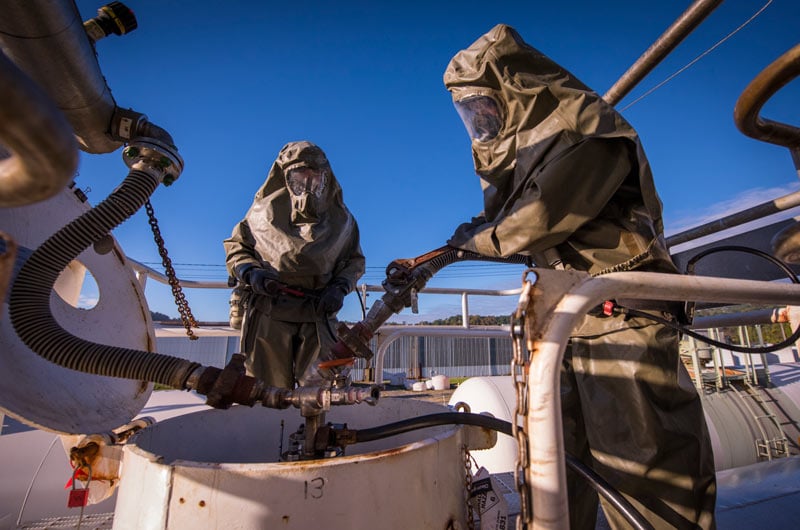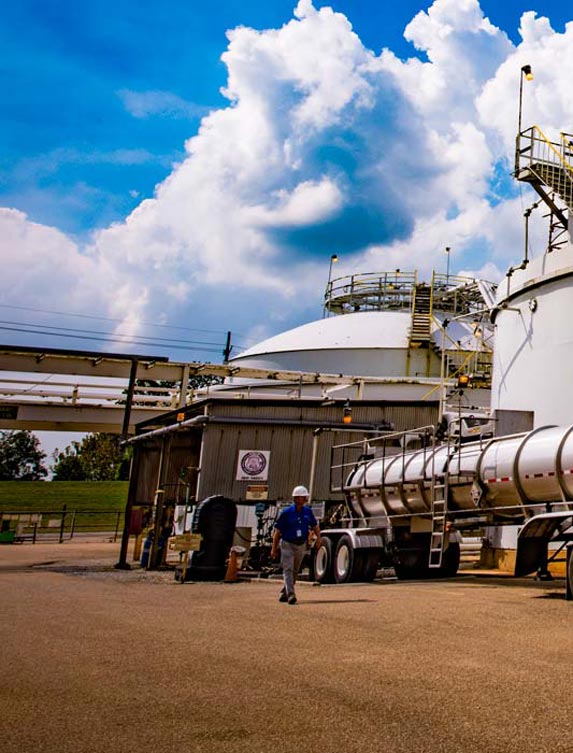Sulfuric acid (H2SO4) is the world’s number one consumed industrial chemical by volume and plays an integral role in the production of everything from petrochemicals, fertilizers and preservatives to cosmetics, dyes, paper, steel, pharmaceuticals, explosives, semiconductors and batteries.
For manufacturers of these materials, any disruption in the delivery of sulfuric acid to their plant(s) can mean significant financial loss as a result of non-productive time (NPT). Reliability of supply is therefore critical to mitigating risk and ensuring profitability. It is also important that deliveries take place in a safe and environmentally responsible manner, and that acid consistently meets agreed-upon quality specifications.
Because there are a number of variables that can impact a sulfuric acid supplier’s ability to meet these requirements, end-users must be thorough when choosing an H2SO4 provider. Some important questions you can ask that will help determine overall security of supply are outlined below.
Where is my sulfuric acid coming from? On-purpose sulfuric acid suppliers
On-purpose suppliers are those who own and operate their own dedicated production facilities. In most cases, these suppliers operate multiple acid plants in strategic locations, which enable them to meet demand across a wide geographic area and quickly respond to potential supply chain disruptions, such as a rail going out of service. Reliability of supply is a top priority for on-purpose sulfuric acid suppliers as it is core to their business.

How is the quality of the acid monitored?
Another important area for end-users to consider when selecting a sulfuric acid supplier is quality monitoring and assurance. This is particularly the case when the acid will be used in industries that are highly sensitive to stringent acid quality specs such as pharmaceuticals and car battery manufacturing. To this end, users should ensure their supplier has a defined quality assurance (QA) program in place that extends beyond simply testing the sulfuric acid before it is shipped.
QA practices typically vary from supplier to supplier. Some have comprehensive programs, where multiple layers of monitoring and protection are employed, while others do the bare minimum.
Check for these key practices
-
Continuous process monitoring is utilized — A comprehensive QA program will often employ some form of continuous monitoring during production in order to identify process “drift.” This allows sulfuric acid producers to be proactive about quality by detecting minor deviations in process variables before they impact the grade of the end product.
- Defined protocols and procedures are in place to remedy potential issues — In the unlikely event that a quality or production issue is identified, the supplier must have defined protocols and procedures in place to quickly remedy the problem. Failure to do so can result in an unusable batch, costing time and money, and ultimately jeopardizing on-time delivery to the customer.
-
Sample results are documented and retained — End-users should also ensure that their supplier retains sample results for a period of time after the product has shipped. Doing so is important in the event that there is a discrepancy. In such cases, a documented record that includes information, such as the grade of acid, time of sample, identity of the individual taking the sample, etc., is important for identifying the root cause of the problem and avoiding any potential disputes.
What measures are taken to ensure safe delivery and handling?
Sulfuric acid is a hazardous chemical and safe handling practices as well as environmental considerations are core requirements. It is therefore critical for end-users to engage with suppliers who have rigorous health and safety programs.

There are many components to preserving health, safety and environment (HSE) when it comes to the handling and delivery of H2SO4. Routine inspection of tank trailers and railcars ensures containers are up-to-date on safety and regulatory requirements and are shipped out in good order. Inspection of other equipment, including valves, gaskets and piping used in the loading and unloading of acid is also important. These activities are important for maintaining a safe workplace and clean environment for all stakeholders; additionally, they also improve reliability of supply.
There is also a human aspect to HSE. Producers who are good stewards strive to ensure that all personnel in the chain of custody process are properly trained on how to handle sulfuric acid and respond in the event of an incident.
What happens if I have an issue with my sulfuric acid delivery?
For industrial enterprises whose uptime and profitability are contingent on sulfuric acid arriving to their sites on time, regardless of location, weather, supply chain disruptions, etc., responsiveness is critical. When one of these events does inevitably occur, manufacturers must have assurance that they will be able to reach their supplier and remedy the situation before production is impacted.
Make sure you know exactly who to call
It is critical for end-users to engage with a supplier who is not only knowledgeable, but also accessible. This includes during off-hours and also on weekends and holidays. Many suppliers have support personnel that can be reached during normal working hours. However, very few can guarantee timely assistance 24/7/365. Before making a decision, users should ask prospective suppliers who to call if there is a problem and to what extent the line is monitored outside of normal hours.
Get details on your backup supply plan
Being able to get in contact with the sulfuric acid supplier is only part of the solution. Suppliers must also possess the supply chain flexibility to reroute shipments, possibly utilizing different modes of transportation, to ensure end-user facilities do not experience downtime. Suppliers should have inherent flexibility to supply critical product from multiple ship points should weather or other unforeseen difficulties limit supply from a primary source point.
Making the right choice
Ultimately, there are a number of factors that will determine whether a particular sulfuric acid supplier is an ideal partner, including geography, the volume and type of acid required, proximity to production sites and/or rail lines and number of facilities able to supply an end-use location among others.
Another factor that could potentially influence the decision is what the company intends to do with the acid after it has been used. In the past, many industrial organizations have disposed of their spent acid via neutralization, incineration or even deep well injection. However, as demand for sulfuric acid continues to grow and companies face greater pressure to find more sustainable outlets for their byproduct streams, one option that has become increasingly attractive is sulfuric acid regeneration. Engaging with a sulfuric acid provider that can both supply high-grade acid and take it away for beneficial reuse is advantageous to end-users in that it simplifies the chain of custody.
Regardless of what a sulfuric acid user’s demands are, safety and supply chain flexibility should be held in the highest regard. The latter is critical to ensuring security of supply and mitigating the risk of unforeseen market events impacting production, uptime, and profitability.
Now that you know how to select a sulfuric acid supplier, what’s next? Check out our blog on how sulfuric acid is regenerated to explore environmentally safe disposal options for your spent sulfuric acid.



